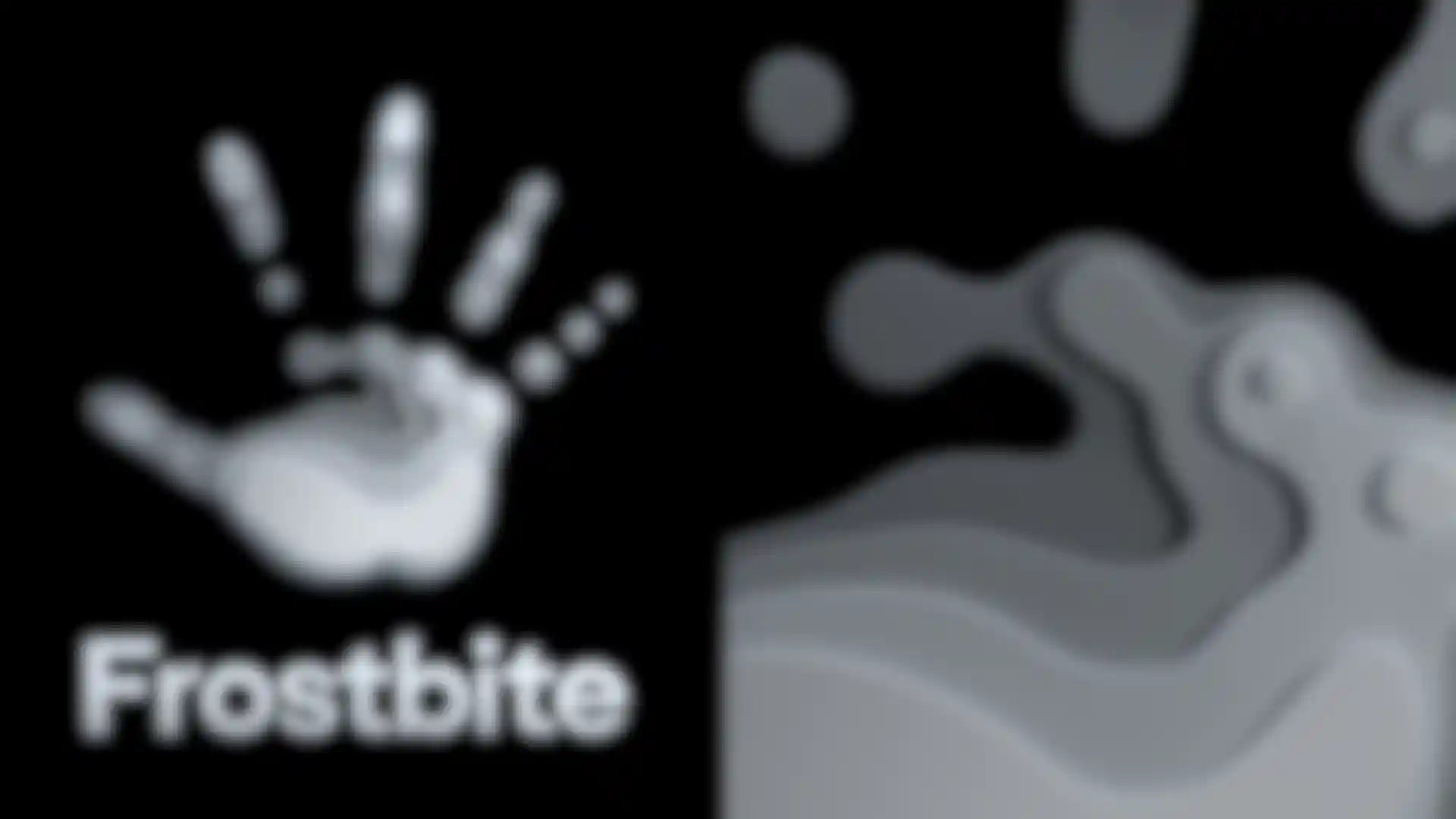
Four Lessons from a Stunning Rebrand How Vincent Studios rebuilt Electronic Arts’ Frostbite logo for a new era.
Ever since 2008’s “Battlefield: Bad Company,” the Frostbite game engine has been pivotal in driving Electronic Arts’ (EA) success in first-person shooters and sports titles. But the most recent Frostbite logo, bearing the emblematic open hand fractured into glass-like shards, had served for a decade — practically a geological epoch in the tech world.
It was, as EA put it late last year, time for a new logo to signal “not just a visual shift for Frostbite, but a philosophical one, with a renewed focus on partnership with our teams and creators.”
Easier said than done. EA tapped multiple firms for help with a redesign, but none satisfied until the game publisher eventually turned to London-based Vincent Studios, which used Cinema 4D, Redshift, and Red Giant for what soon became a rebrand.
With an established history of success on other core EA brand projects, Vincent Studios was the perfect choice for achieving EA’s goals of keeping the well-known hand with the Frostbite symbol in the palm while emphasizing connectivity, collaboration, and cutting-edge technology with great optics.

Lesson #1: Find the Optimal Vision
Vincent Creative Director John Hill and his team spent six weeks working up hundreds of ideas, sketching in coffee shops, experimenting on workstations, and even dabbling with generative AI (principally Midjourney). Interestingly, Hill found AI useful for ideation but “too random … a total zero” in devising concrete designs but he is still interested in using the technology to assess its ongoing potential.
Soon, it grew clear that including every visual element requested by EA meant excessive complexity. Hill particularly struggled with the Frostbite mark in the hand’s center. To echo the Emperor in “Amadeus,” it all felt like “too many notes,” he recalls.
So Hill resolved to keep the hand and drop the mark, especially since the latter was not a widely recognized element beyond the game engine’s inner circle. With that done, Vincent could simplify and streamline the logo, which in turn left the team free to focus on the design’s more thematic elements.

Losing the mark was a tough ask, but since the end goal was to lure new developers toward Frostbite technology, they sacrificed the legacy mark for a greater sense of simplicity, collaboration, and excitement.
Lesson #2: Plan for Everywhere
The new logo concept was only the beginning. Hill knew that Frostbite had plans to push the rebrand across a wide range of media. “It starts with a great logo,” he says. “A vector 2D logo that can translate well into great motion behavior, something that will work for print, work as a one-bit desktop icon, work in 3D, work in 2D on a T-shirt. You start with that core mark, and as long as you know it has legs and flexibility in your head, you can sell it.”
Still, flexibility has limits. In every size and format, the brand would need to encapsulate the same Frostbite concept. So he wanted a more simplistic route, initially. “Just a push against a flat screen, a glass sheet,” he recalls. That led to a very simple, beautiful animation. But Frostbite wanted more reflection on connectivity and collaboration and networking. They imagined a team working on this render engine, almost like a nodal visualization.”
That feedback pushed Vincent to think about growth, which led to nature. Combining that with Frostbite’s game engine led to examining the growth of frost, which exhibits interlocking polygons that dovetailed well with the theme of collaborating nodes.
The last conceptual piece to fall into place was layers. Interpret how you please: a software stack, teams building upon one another, applications atop an engine foundation, layers of optical lenses, the human hand rendered almost as an imprint on a topographic landscape.
Vincent’s layered frost/glass concept preserved the trademark hand while expressing an entirely new, open symbology. And no less important, the logo lent itself to representation across any scale and medium, including video. In the moment, though, the logo was little more than a concept. Once Vincent had EA’s nod of approval, it was time to build.
Lesson #3: Pipeline Over Perfection
John Hill notes he sometimes progresses from pen and paper to vector-based Illustrator, but increasingly he jumps straight into Cinema 4D, which he’s used ever since version 5. “Cinema 4D covers such a broad scope of animation techniques, and it's a one-stop shop for 95 percent of whatever we need done,” he says.
Hill prefers to get by without using other tools wherever possible, just to keep the pipeline simple. With the Frostbite project, they kept the entire workflow between sketching and compositing within Cinema 4D.
From a workflow perspective, Vincent moved quickly from vector logo to animating splines for motion graphics. Splines allowed the team to experiment with different motion behaviors and animation styles. There were several options available for this step, but Hill opted for X-Particles. Beyond its features and performance, X-Particles operates as a Cinema 4D plugin, which helped preserve a unified C4D workflow.


Once the team perfected its animation in spline form, they proceeded through 22 versions of adding mesh to the splines in volumetric data (VDB) format. Then came adding detail to the meshes and refining to accommodate transparency and 4K resolutions. Files grew massive, but that was necessary to achieve quality suitable for moving into Redshift for rendering.
After rendering, the team switched to After Effects for lighting and flares, then added more fine touches, such as the stray bits of dust added in Trapcode Particular and Universe tools for glow and chromatic aberration. Redshift was used for rendering.
Lesson #4: Earn Trust Through Simplicity
Knowing the project was very close to Frostbite’s product team and EA’s brand team, Vincent Studios worked closely with them throughout the process. Still, Hill is happy the team had a level of client trust respect to be able to exercise a high level of creative freedom.
One of the best ways to earn client trust, according to Hill, is to marry simplicity with strength: a minimalistic design backed by a compelling concept. This combination resonates with viewers, whether they’re client stakeholders or public end-users.
“Once you have that strong, simple idea, you use the best tools to realize its execution. Cinema 4D is fantastic for that. Its flexibility is massive. That allowed us to keep focus on the idea, not having to learn another and then another piece of software. Because you want to maintain a work pace quick enough to keep your flow going. Because if you ever get bogged down by creative lag, you’re in deep trouble.”
William Van Winkle is a semi-technical writer on the Maxon documentation team.





